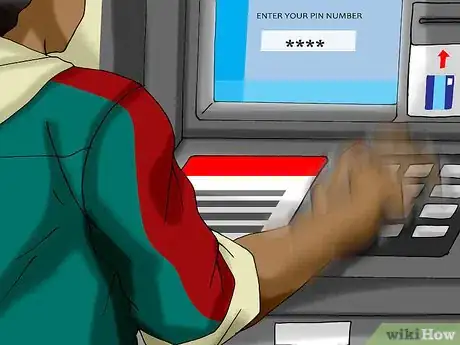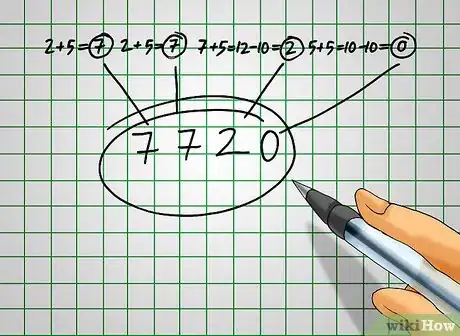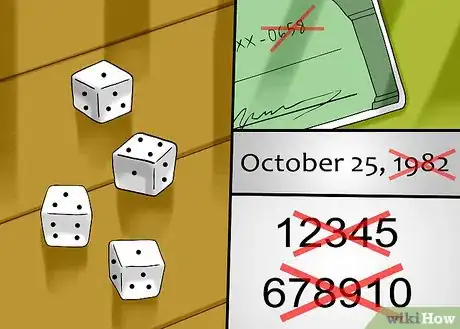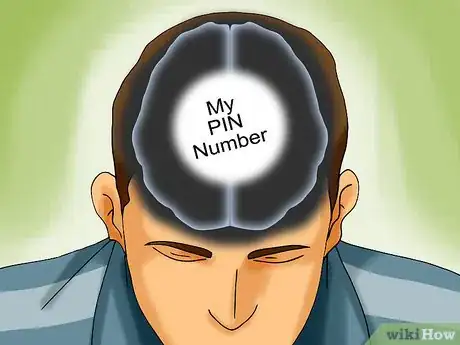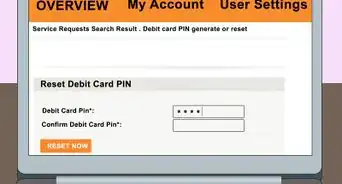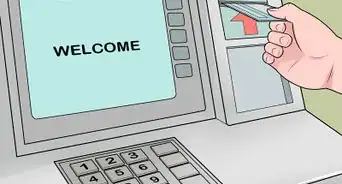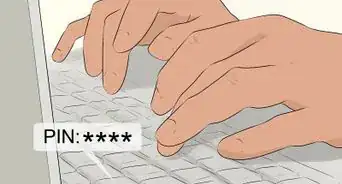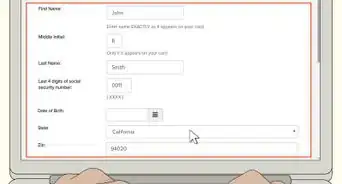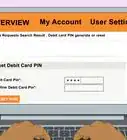This article was co-authored by wikiHow Staff. Our trained team of editors and researchers validate articles for accuracy and comprehensiveness. wikiHow's Content Management Team carefully monitors the work from our editorial staff to ensure that each article is backed by trusted research and meets our high quality standards.
This article has been viewed 39,327 times.
Learn more...
Personal identification numbers, or PINs, are needed for most electronic financial transactions. They are also becoming more common as a means of protecting mobile devices and personal computers. Trying to remember all of these different numbers at checkout can be difficult and potentially embarrassing if you forget your PIN. However, there are multiple strategies that can help you safely remember your PIN for when you need it.
Steps
Creating Associations
-
1Find numbers that are meaningful to you. If you have the option of creating your PIN, this is perhaps the easiest and most common means of recalling it. Find a set of numbers that have some kind of significance to you and will, therefore, be easy to remember. These numbers can be important dates, the numbers of your favorite athletes, an old phone number, etc... [1]
- Be sure to avoid using numbers that will be easy for a criminal to obtain, like your birthday or the last four digits of your phone number. Make it a number that you’ll remember but that is obscure enough to not be evident to a criminal.
- If you are 18 and your favorite grandparent is 90, you might use 1890.
-
2Use bizarre imagery. This technique uses strange or funny visuals that will help you remember your PIN. Try to find an association between certain numbers in your PIN. These can be associations with individual numbers or groups of them. Try to create an association that will be particularly absurd or strange and, therefore, easier to recall.[2]
- For example, if you want to remember 0285, think of a two-year-old whose best friend is 85.
Advertisement -
3Make a mnemonic. Use the first letter of each number in your PIN to create a mnemonic device for recalling your PIN. Mnemonics are excellent devices for remembering various kinds of information. Simply take the first letter, find a word that starts with that letter, and create a mnemonic that will stick with you. [3]
- For example, 2275 is “two, two, seven, five.” Take the first letter of each number, which is TTSF, and create a sentence, like Two Toads Smell Funky.
- You can also use the first syllable of each number to create your mnemonic. This may help you create a stronger mental association.
-
4Create a story. This method is similar to the bizarre imagery but can be more detailed. You should think of a backstory for your number that either explains it entirely or parts of it. Is your number the secret code name of a secret agent or the birthdates of two star-crossed lovers? Develop a rich background for your number. [4]
- For example, if your PIN is 2333, think of Michael Jordan playing one-on-one against his teammate Scotty Pippen. Their numbers were 23 and 33 when they played together on the Chicago Bulls.
-
5Connect numbers to people you know. Associating your PIN with important people in your life is an easy way to ensure that you remember your number. Find numbers that are connected to the people that you care about.[5]
- For example, your grandmother was born in 1922 and your mother in 1975, so your number will be 2275.
-
6Practice repetition and mapping. Practice the movements you make while entering your PIN to sharpen your muscle memory. Through repetition, your brain will remember the movements you make when you enter the number. With enough practice, you should be able to enter your number without even thinking of it. Your body will guide you to the right numbers. [6]
- Because it is unlikely that you will want to spend hours practicing your movements are your local ATM, this method may be the least practical.
Disguising Your PIN
-
1Make a word out of your PIN. When using a telephone or ATM keypad, each number is associated with three letters. Determine what your PIN spells out on a phone or ATM keypad. Instead of trying to remember a series of meaningless numbers, it may be easier for you to remember this word.
- For example, the PIN 3474 is the word “FISH.”
- You can use a website like Phone Spell to determine what letters correspond with your number.
- If you have the option of creating a PIN, you can also use a word that is meaningful to you and convert it into a number.
-
2Make a sentence out of your PIN. Determine the letters associated with your PIN numbers using a keypad or Phone Spell and use those letters to create individual words. Each number has three letter options so it should be easy for you to develop a sentence that you can remember and helps you remember your PIN. These words can be anything, so long as they help you remember your number.[7]
- For example, 2275 can be CASL or Cats Always Sleep Long.
-
3Encrypt your PIN. You should generally avoid writing down your PIN. However, if you are simply unable to remember your number, you can try encrypting it with false numbers. When you write down your PIN, try interspersing it with numbers that are not part of it. This will make it more difficult for others to use your number if your information is stolen.
- Try sticking zeros between each number. For example, 1234 becomes 10203040.
- You can also use the next number up. For example, 5678 becomes 56677889.
-
4Use math to hide your PIN. If you have to write down your PIN, a more advanced method for disguising it is by using Modular Arithmetic. In this method, numbers wrap around and work in a similar way to how we calculate time on a clock. For your pin, you will want to use a module of 10, meaning that 10 is actually zero. In this system you can add or subtract a certain number from each number of your PIN and create a new number that your write down. In this system all that you need to remember is the number that you have chosen to add or subtract.
- For example, if you decide to add 5 to each number of 2275, your encrypted pin would be 7720. 2+5= 7; 2+5=7; 7+5=12-10=2; 5+5=10-10=0
-
5Create small changes. When you write down your PIN, make small changes to it that only you are aware of. Try changing only one number. This will be enough to make it worthless to an identity thief.
- For example, if your PIN is 4569, write it down as 4579.
Ensuring a Secure PIN
-
1Ask the bank to create a number for you. If you are unsure about what PIN to use, ask the bank to create one for you. This will ensure that the number is completely random and, therefore, less likely to be stolen. However, this will make the PIN more difficult to remember.
- Most banks will work with you to create a safe and secure PIN.
-
2Try to use random numbers. The easiest way to create a secure PIN is to use random numbers. Although this PIN might be the most difficult to remember, it will be more difficult for an identity thief to steal it. If you are having a hard time picking a random number, try rolling a pair of dice and using the numbers that come up.
- Avoid using numbers like the last four digits of your social security number or your birthday.
- Do not use sequential numbers like 1234 or 5678. These are some of the most common and, therefore, likely to be the first combinations a thief tries to use.
- Do not use the same number for multiple PINs.
-
3Avoid writing down your number. Although writing down your PIN will ensure that you always have it, it also increases the likelihood that it will be stolen. This is particularly dangerous if you are carrying your PIN in your purse or wallet with your card. If your things are stolen, a thief will have all of your information. [8]
- The only way to securely retain a PIN is to memorize it.
- If you have to write down your PIN, try to disguise it using encryption, math or other technique.
-
4Use a password manager for important PINs and passwords. Services like LastPass or 1Password offer to store and remember your passwords and PINs for you, which are then hidden behind a master password that only you know. Once you have entered your primary password, these services will autofill forms and keep your information secure. As long as you do not lose your main account password, your information will be safely protected. [9]
- Many of these services are free and offer further security with pay upgrades.
- Since your main password is the key to all of your other information, you will want to avoid writing it down or keeping it in a document that might be stolen.
- For PINs, if you are likely to forget them while you are out, these services offer mobile apps where you can access your information. However, these are typically premium services.
References
- ↑ https://lifehacker.com/5889565/you-should-probably-change-your-pin-now-heres-how-to-remember-your-new-secure-pin
- ↑ http://www.telegraph.co.uk/finance/personalfinance/bank-accounts/11037201/Clever-tricks-to-remember-your-passwords.html
- ↑ https://lifehacker.com/5889565/you-should-probably-change-your-pin-now-heres-how-to-remember-your-new-secure-pin
- ↑ http://www.telegraph.co.uk/finance/personalfinance/bank-accounts/11037201/Clever-tricks-to-remember-your-passwords.html
- ↑ http://www.telegraph.co.uk/finance/personalfinance/bank-accounts/11037201/Clever-tricks-to-remember-your-passwords.html
- ↑ http://www.extremetech.com/extreme/133067-unbreakable-crypto-store-a-30-character-password-in-your-brains-subconscious-memory
- ↑ https://lifehacker.com/5889565/you-should-probably-change-your-pin-now-heres-how-to-remember-your-new-secure-pin
- ↑ https://www.washingtonpost.com/news/the-switch/wp/2014/08/07/how-to-keep-track-of-your-passwords-without-going-insane/
- ↑ https://www.washingtonpost.com/news/the-switch/wp/2014/08/07/how-to-keep-track-of-your-passwords-without-going-insane/





